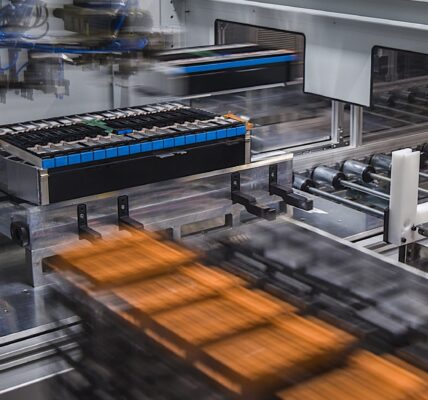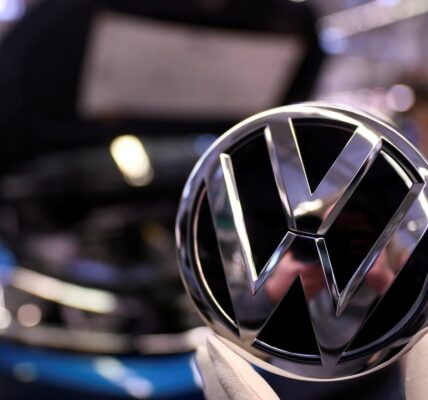Electric Vehicle Battery Market Size To Worth Around US$ 559.87 Bn by 2030
The global electric vehicle battery market size was accounted at US$ 46.03 billion in 2021. The burgeoning sales of the electric vehicles across the globe are expected to significantly drive the growth of the EV battery market during the forecast period. Furthermore, the declining battery prices owing to the technological advancements and increasing research and development expenditure is another major factor behind the rising adoption of the EVs. The rising public-private partnerships to establish charging station infrastructure is a notable government initiative that is expected to fuel the growth of the global EV battery market.
There has been a significant upsurge in the popularity of the electric vehicles in the past few years. The rising government initiatives to shift towards electric vehicles and reduce carbon emission from vehicles have led to the regulatory reforms regarding the use of electricity powered commute solutions across the globe. In several countries, the government is offering subsidies to the consumers to purchase BEVs and PHEVs to boost the adoption of electric vehicles.
Scope of the Electric Vehicle Battery Market
| Report Attributes | Details |
| Market Size in 2021 | USD 46.03 Billion |
| Growth Rate | CAGR of 32% from 2022 to 2030 |
| Battery EV Segment Market Share | 38% in 2021 |
| Base Year | 2021 |
| Forecast Data | 2022 to 2030 |
| Companies Covered | Hitachi, ATLASBX Co. Ltd., Sony, Narada Power Source Co., Ltd., TCL Corporation, Huanyu New Energy Technology, Duracell, Crown Battery Manufacturing, EnerSys, Inc., C&D Technologies, Inc., Panasonic, NEC Corporation, North Star, GS Yuasa Corp., BB Battery Co. |
Highlights
- Based on battery type, the lithium-ion was the dominating segment in 2021. The lightweight of the lithium-ion batteries and its higher energy density are the two major properties that makes it suitable for use in electric vehicles. It is highly used in the BEVs and PHEVs across the globe, which led to the dominance of this segment.
- On the basis of Vehicle type, the commercial vehicle is expected to be the most opportunistic segment. The growing government initiatives to electrify the commercial vehicles and public transport medium are expected to drive the growth of this segment. The commercial vehicles are the major carbon emitting vehicles and hence its electrification is the priority of the government.
- Depending on the propulsion, the BEV segment dominated the market in 2021. The BEVs wholly depends on the batteries for power and hence the BEVs are the major consumers of the EV batteries, which led to the dominance of this segment in the EV battery market.
Regional Insights
Asia Pacific dominated the global EV battery market in 2021. With the rising urbanization and increasing purchasing power parity, the demand for the electric vehicles is rising in countries like China, India, and Japan, which is expected to augment the demand for the lithium-ion batteries. China is one of the leading markets for electric vehicles owing to its growing inclination towards clean energy. India is a top importer of the lithium-ion batteries and South Korea and China are the major trading partners for India for lithium-ion batteries. Asia Pacific is among the top producers and top consumers of the EVs and hence the demand for the EV batteries is high in Asia Pacific region. The government of India is emphasizing on the conversion of two and the three-wheelers segment into electric and wants to achieve 30% of automotive sales to e-mobility by the year 2030.
Europe is expected to exhibit the highest CAGR during the forecast period. The government initiatives to promote adoption of electric vehicles and EV batteries play the major role. The government provides subsidies and incentives to the consumers and the manufacturers as the EVs are very much expensive in Europe. The presence of top OEMs in Europe significantly contributes towards the growth of the electric vehicles and batteries market. The government in France is intended to encourage the electric commercial vehicles and is targeting to electrify the public transport solutions. Therefore, the rising government initiatives to promote EVs in various European countries are expected to drive the growth of the EV battery market in Europe in the forthcoming years.
Market Dynamics
Driver
Rising penetration of the plug-in models
The leading manufacturers like Hyundai, Tata, Toyota, and Mercedes are heavily investing to enter into the EVs market owing to the surging demand for the EVs across the globe. Many of the auto manufacturers are partnering with the battery manufacturing companies to gain market share, strengthen their position, and exploit the market opportunities. Therefore, the rising production of the plug-in models is expected to drive the growth of the EV battery market during the forecast period.
Restraint
High costs of EVs
Electric vehicles are very expensive in the current scenario. The volume of low and middle income consumers is very high across the globe and their financial limitations may restrict them to shift to the electric vehicles. Therefore, the lower adoption of the electric vehicles among the low and middle income groups may hinder the growth of the EV battery market.
Opportunity
Growing popularity of the battery-as-a-service model
The major companies in the market are adopting battery-as-a-service model under which the consumers can swap or change the batteries after discharge. This model helps the user to save time that needs to be spent on charging the batteries and improve customer experience and customer satisfaction. The rising popularity of the battery-as-a-service model is expected to offer numerous growth opportunities to the market players in the foreseeable future.
Challenge
Battery safety concerns
EV batteries undergo various safety tests before it is put under use. The incidents like Chevy EV Bolts fire incidents pertaining to the batteries are a major doubt among the consumers regarding the battery safety. EV batteries involve the use of inflammable materials like plastics, manganese, and lithium. Lithium is highly reactive to water. Therefore, the rising concerns over battery safety are a major challenge for the market players.
Recent Developments
In December 2019, Samsung SDI became the majority stakeholder in Samsung SDI-ARN Power Battery Co. Ltd. with total of 65% by acquiring additional stake of 15%.
Market Segmentation
By Battery Type
Lead-Acid Battery
Lithium-ion Battery
Sodium-ion Battery
Nickel-Metal Hydride Battery
Others
By Vehicle Type
Passenger Vehicle
Commercial Vehicle
By Propulsion
Battery Electric Vehicle
Plug-in Hybrid Electric Vehicle
Hybrid Electric Vehicles
Fuel Cell Electric Vehicles
By Li-ion Battery Component
Positive Electrode
Negative Electrode
Electrolyte
Separator
By Method
Wire Bonding
Laser Bonding
By Capacity
<50 kWh
50-110 kWh
111-200 kWh
201-300 kWh
>300 kWh
By Battery Form
Prismatic
Cyindrical
Pouch
By Material Type
Lithium
Cobalt
Manganese
Natural Graphite
By End User
Electric Vehicle OEMs
Battery Swapping Stations
By Geography
North America
Europe
Asia-Pacific
Latin America
Middle East & Africa (MEA)







